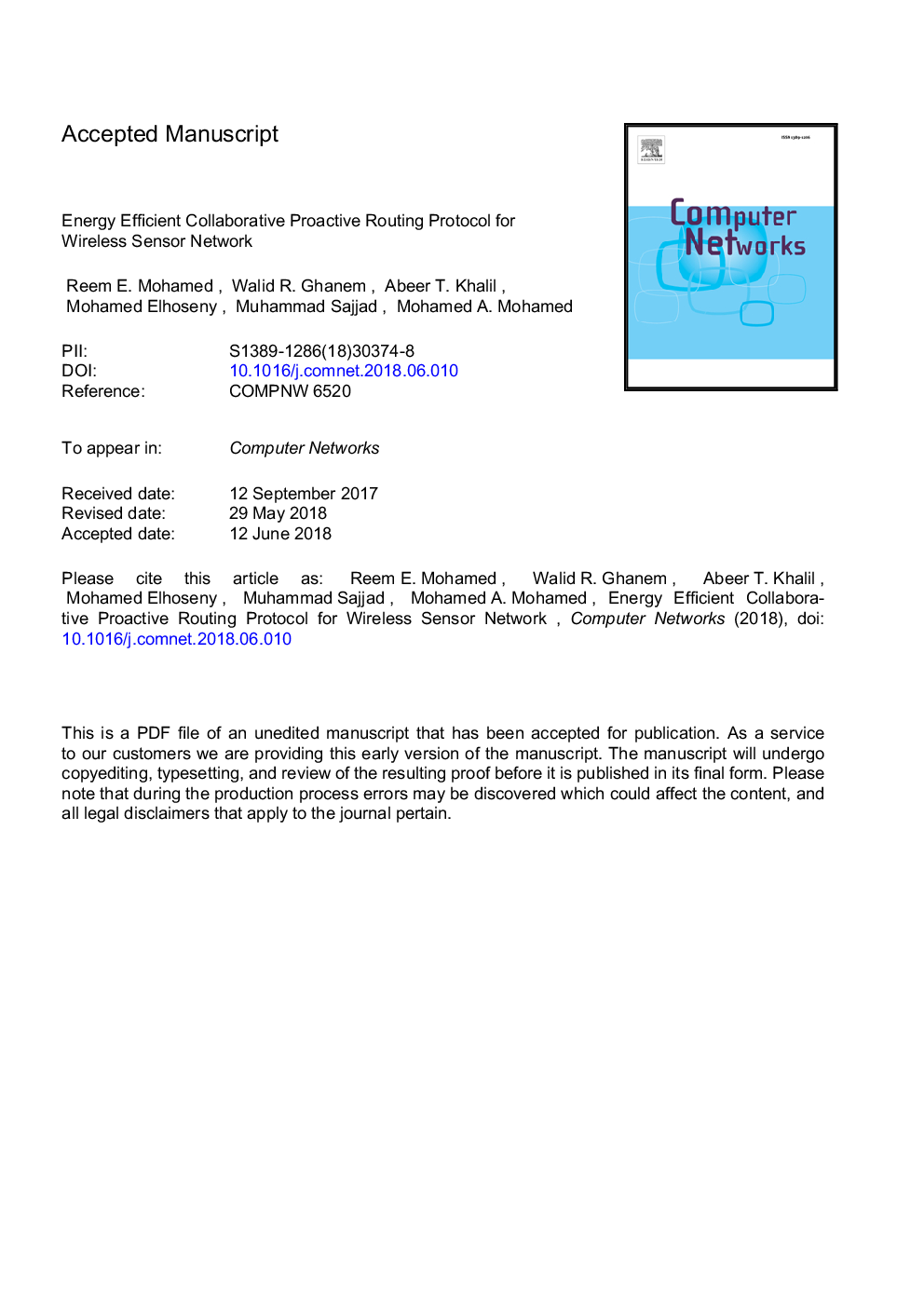| کد مقاله | کد نشریه | سال انتشار | مقاله انگلیسی | نسخه تمام متن |
|---|---|---|---|---|
| 6882615 | 1443877 | 2018 | 26 صفحه PDF | دانلود رایگان |
عنوان انگلیسی مقاله ISI
Energy efficient collaborative proactive routing protocol for Wireless Sensor Network
ترجمه فارسی عنوان
انرژی کارآمد پروتکل مسیریابی مشارکتی برای شبکه حسگر بی سیم
دانلود مقاله + سفارش ترجمه
دانلود مقاله ISI انگلیسی
رایگان برای ایرانیان
کلمات کلیدی
شبکه های حسگر بی سیم، شبکه های همگن، برنامه های نظارت، مسیریابی پیشگیرانه، محدوده درجه درخت، آنتن توزیع،
موضوعات مرتبط
مهندسی و علوم پایه
مهندسی کامپیوتر
شبکه های کامپیوتری و ارتباطات
چکیده انگلیسی
A Wireless Sensor Network (WSN) is a group of tiny power-constrained nodes that cover a vast region of interest (ROI), sense and communicate it to the Base Station (BS). The main challenge encountered in WSNs is how to cover the ROI perfectly and transmit the monitored data to the BS for the longest possible time. Although many energy-efficient routing protocols for periodic monitoring applications were recently introduced, the dynamic nature and complex environments of WSN applications make building such protocols a considerable challenge. In this paper, the node degree of the Degree Constrained Tree (DCT) in homogeneous proactive WSN is studied analytically for the network with one BS that is outside the ROI. Since the node degree affects the network lifetime of these types of networks, the optimum node degree for minimum energy consumption in DCT is derived. Subsequently, the paper proposes a Collaborative Distributed Antenna (CDA) routing protocol that is based on distributed antenna theory to provide fair load distribution in terms of transmission energy. CDA is based on DCT with optimal node degree and is designed for periodic data monitoring in WSN applications. The experimental results prove our analysis to emphasize that using optimal node degree in DCT doubles its network lifetime compared to using other node degrees. Moreover, adding CDA to DCT with optimal node degree is proved to double the network stability period and reduce the ratio between instability period and the network lifetime to its half. It also shows 25% increase in network lifetime and minimum rate of node loss compared to its peers, such that the lifetime of half the nodes is preserved until few rounds before the end of network lifetime.
ناشر
Database: Elsevier - ScienceDirect (ساینس دایرکت)
Journal: Computer Networks - Volume 142, 4 September 2018, Pages 154-167
Journal: Computer Networks - Volume 142, 4 September 2018, Pages 154-167
نویسندگان
Reem E. Mohamed, Walid R. Ghanem, Abeer T. Khalil, Mohamed Elhoseny, Muhammad Sajjad, Mohamed A. Mohamed,
